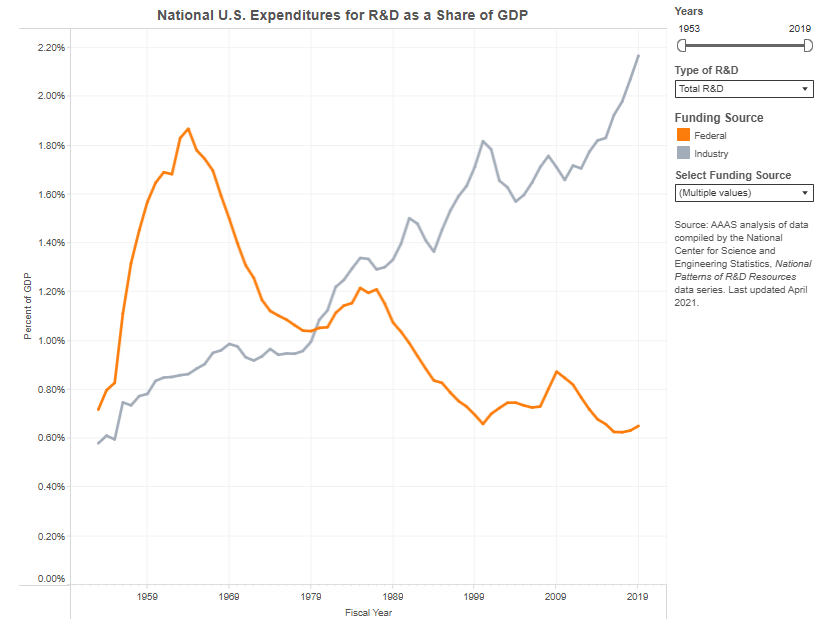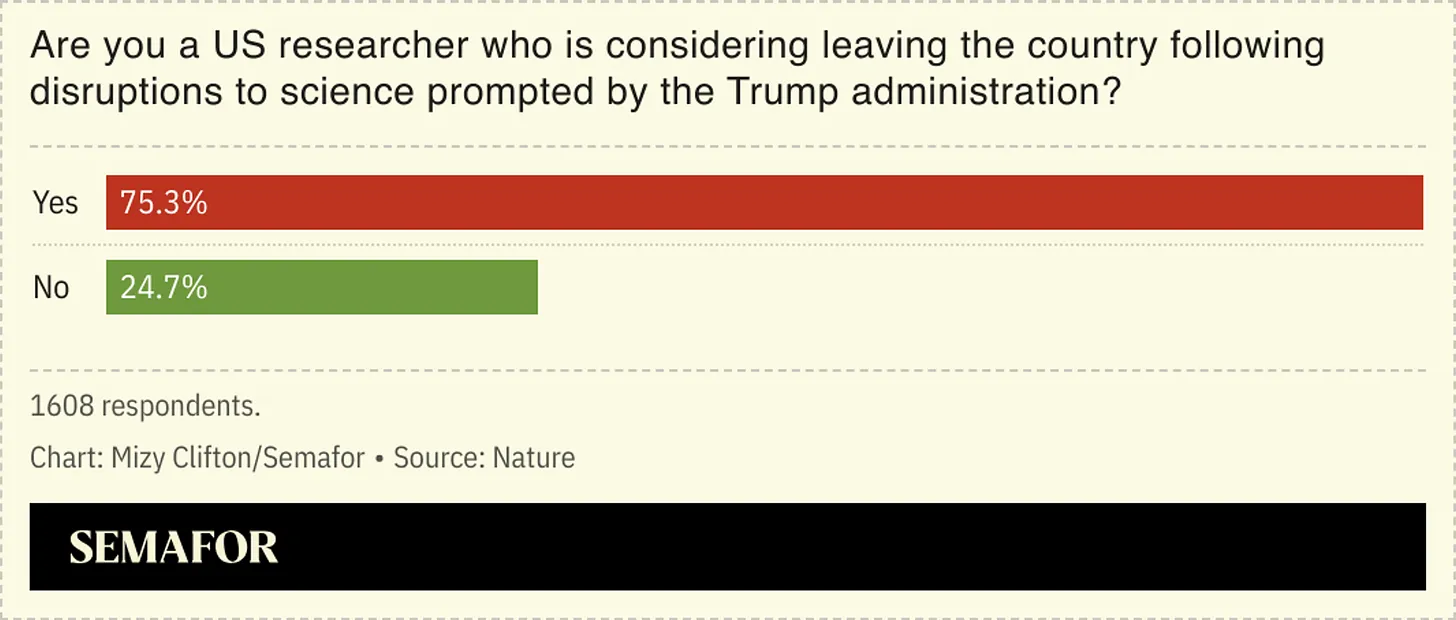As Ben Casselman reports in The New York Times, economists view the Trump administration’s scientific research cuts with greater alarm than other economic policies like tariffs or federal workforce reductions.
Casselman:
The Trump administration in recent weeks has canceled or frozen billions of dollars in federal grants made to researchers through the National Institutes of Health, and has moved to sharply curtail funding for academic medical centers and other institutions. It has also, through the initiative called the Department of Government Efficiency, tried to fire hundreds of workers at the National Science Foundation, an independent federal agency. And it has revoked the visas of hundreds of foreign-born students.
This also sounds bad:
The National Institutes of Health, for example, have proposed capping the rate at which the government reimburses universities and other research institutions for “indirect costs,” such as facilities and staff members not tied to a specific research project. In a working paper published Monday by the National Bureau of Economic Research, a group of economists found that the policy would lead to substantial funding cuts and would disproportionately affect institutions with the most successful research programs.
That economists are concerned is hardly surprising given the abundance of evidence on the importance of R&D, including government investment. (Business R&D focuses on commercial viability while governments fund higher-risk, fundamental research with longer horizons. This public-private symbiosis has created tremendous economic value for America.) As it is, federal investments in science have fallen as a share of the economy since the Cold War’s end, which economists link to slowing productivity growth.

Look: Every dollar invested in research and development returns about $5 in economic gains, according to Northwestern University economist Benjamin Jones, likely understating the true return as it doesn’t account for benefits like longer lives and increased leisure time. And government investments in R&D accounted for at least one-fifth of US productivity growth since World War II, according to the Federal Reserve Bank of Dallas. From that report:
Based on a narrative classification of all significant postwar changes in R&D appropriations for five major federal agencies, we find that an increase in nondefense R&D appropriations leads to increases in various measures of innovative activity and higher business-sector productivity in the long run. We structurally estimate the production function elasticity of nondefense government R&D capital using the SP-IV methodology of Lewis and Mertens (2023) and obtain implied returns of 140 to 210 percent over the postwar period. The estimates indicate that government-funded R&D accounts for one fifth of business-sector TFP growth since WWII, and imply substantial underfunding of nondefense R&D.

Yes, Trump administration officials characterize their approach as improving efficiency rather than reducing support, Casselman notes. And some grant system reforms are warranted. But as laboratories dismiss staff and halt clinical trials, and as countries like France actively recruit American scientists, it’s worth questioning whether short-term budgetary gains justify potentially irreversible damage to the research ecosystem that has powered American prosperity for generations.
In my 2023 book, The Conservative Futurist: How To Create the Sci-Fi World We Were Promised, I outline an agenda for refueling America’s innovation engine, including a doubling of R&D spending through government funding and permanent tax incentives for corporate research. Equally crucial is modernizing funding mechanisms, such as a lottery system for funding innovative proposals and extending DARPA-style management with minimal bureaucracy.
Washington should make it a priority to get more R&D bucks and more bang for those bucks as it competes with China for 21st-century technological leadership.
The post America’s R&D Rethink Threatens Its Innovation Supremacy appeared first on American Enterprise Institute – AEI.













